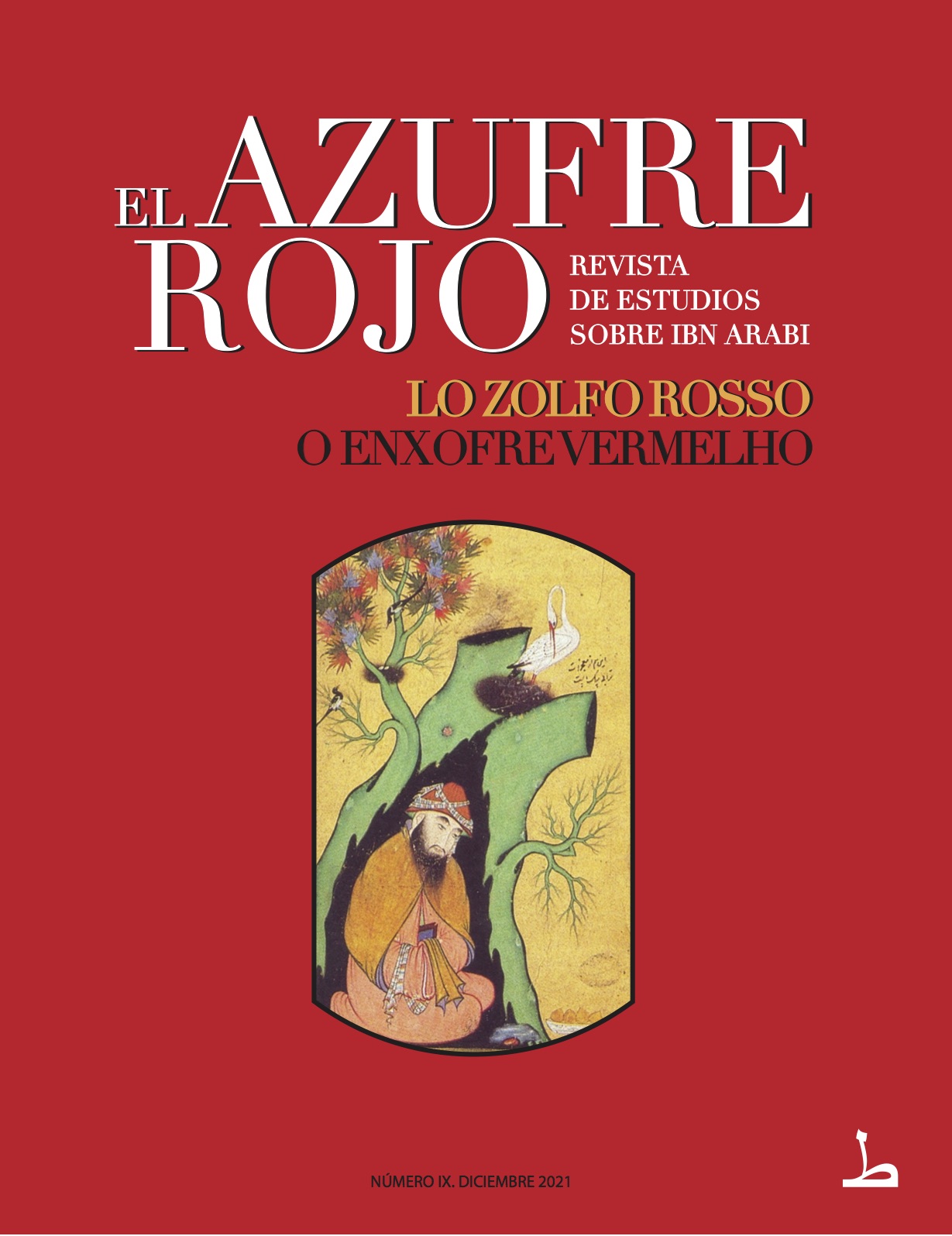POESIA ARABA E SUFISMO NELL’ETIOPIA CONTEMPORANEA,FRA PRATICA E DOTTRINA
Resumen
Riassunto: In questo studio si prenderanno in esame alcuni esempi provenienti dall’Etiopia Sud Occidentale, tutt’ora inediti. Composti da Sufi locali fra la fine del XIX secolo e l’inizio del XX, questi testi mostrano un profondo legame con la pratica del mawlid come festività popolare. Allo stesso tempo i versi racchiudono alcuni insegnamenti metafisici di scuola akbariana.
Abstract: Sufi poetry is widespread, in Arabic and local languages, throughout the Islamic world. In this study, some examples from Southwestern Ethiopia, still unpublished, will be examined. Composed by local Sufis between the end of the nineteenth century and the be-ginning of the twentieth, these texts show a profound link with the practice of the mawlid as a popular festival. At the same time the verses contain some metaphysical teachings of the Akbarian school.
Descargas
-
Resumen270
-
pdf337
Citas
- Ahmed, Hussein, “Islamic Literature inEthiopia: A Short Overview”, Ethiopian Journal of Languages and Literature. pp. 25–37.
----, “Al-Hājj Bushrā Ay Muhammad: Muslim Reformer, Scholar and Saint of Nineteenth-Cen-tury Wallo, Ethiopia”, en Manfred Kropp, y Bertrand Hirsch (coord.), Saints, Biographies and History in Africa, Frankfurt am Main: Peter Lang., 2003.
-----, “Shaykh Jawhar b. Haydar b. ʽAlī: A mystic and scholar of Shonkē, southeast Wallo, Ethiopia”, Annales d’Ethiopie, 20/1 (2004). pp. 47–56, https://doi.org/10.3406/ethio.2004.1069.
- Banti, Giorgio, y Giannattasio, Francesco, “Music and Metre in Somali Poetry”, en Ioan Myrddin Lewis, Bogumił Witalis Andrzejewski, y R. J. Hayward (coord.), Voice and power: The culture of language in North-East Africa / essays in honour of B. W. Andrzejewski, London: School of Oriental and African studies University of London, 1996.
- Braukämper, Ulrich, “The sanctuary of Shaykh Husayn and the Oromo-Somali connections in Bale (Ethiopia)”, Frankfurter afrikanistische Blätter, 1 (1989). pp. 108–134.
- Cecchi, Antonio, Da Zeila alle frontiere del Caffa, viaggi di Antonio Cecchi, pubblicati a cura e spese della Società geografica italiana, con una prefazione di S. E. Cesare Correnti, Roma: E. Loescher, 1886-1887.
- Cerulli, Enrico, Folk-literature of the Galla of Southern Abyssinia, African Department of the Pea-body Museum of Harvard University, 1922.
-----, Iscrizioni e documenti arabi per la storia della Somalia, Roma: Tip. Befani, 1926.
-----, Nuovi documenti arabi per la storia della Somalia, Roma: , 1927.
-----, Etiopia Occidentale: Dallo Scioa alla frontiera del Sudan, Roma: Sindacato Arti Grafiche, 1930-33, 2 vols.
-----, Documenti arabi per la storia dell’Etiopia, Roma: G. Bardi tipografo della R. Accademia nazio-nale dei Lincei, 1931.
- Drewes, Johannes, Classical Arabic in Central Ethiopia: English Text of the Paper Read on 11 December 1975 for the “Oosters Genootschap in Nederland”.Fani, Sara, “Arabic Grammar Traditions in Gibe and Harär: Regional Continuity vs Specificity of Scholarship”, Aethiopica, 19 (2017). pp. 113–134, https://doi.org/10.15460/aethio-pica.19.1.1131.
- Ferguson, Charles, “The Role of Arabic in Ethiopia: A Sociolinguistic Perspective”, en James E. Alatis (coord.), Bilingualism and Language Contact, Washington: Georgetown University Press, 2007.
- Ǧalāl al-Dīn al-Suyūṭī, Al-Durar Al-Muntaṯira Fī Al-Aḥādīṯ Al-Muštahira, al-Riyāḍ: ʻImāda Šu’ūn al-Maktabāt, n.d.
- Gori, Alessandro, “Some Arabic Islamic Manuscripts from Shaykh Ḥusayn (Bale, Ethiopia): A Short Description Based on the MAE RAS Photographs)”, Manuscripta Orientalia, 14/2 (2008). pp. 28–35.
-----, “The Study of Arabic Grammar in Ethiopia: The Case of two Contemporary Muslim Learned Men”, Aethiopica, 11 (2008). pp. 134–147.
-----, “A short note on a silsila of the Qādiriyya brotherhood in Ethiopia”, en Nicola Melis, y Mauro Nobili (coord.), Collectanea islamica, Roma: Aracne, 2012.
- Gril, Denis, “La science des lettres”, en Michel Chodkiewicz, y William C. Chittick (coord.), Les illuminations de La Mecque, Paris: Sindbad, 1988.
- Hassen, Mohammed, The Oromo of Ethiopia: A history 1570-1860, Cambridge etc: Cambridge University Press, 1990.
- Hernández, Adday, “The ʿAjamization of Islam in Ethiopia through Esoteric Textual Manifestations in Two Collections of Ethiopian Arabic Manuscripts”, Islamic Africa, 8/1-2 (2017). pp. 171–192,
https://doi.org/10.1163/21540993-00801004.
- Hussein Ahmed, Islam in nineteenth-century Wallo, Ethiopia: Revival, reform, and reaction, Leiden, Boston: Brill, 2001.
-----, “Harar Wollo Relations Revisited”, African Study Monographs, 41/Supplementary Issue (2010). pp. 111–117.
- Ibn Ḥanbal, Aḥmad, Musnad al-Imām Aḥmad b. Ḥanbal, Bayrūt: Mu’assasat al-Risāla, 50 vols.
- Lewis, Herbert S., Jimma Abba Jifar, an Oromo monarchy: Ethiopia, 1830-1932, Lawrenceville NJ: Red sea press, 2001.
- Muḥammad Walī b. al-Ḥāǧǧ Aḥmad b. ʻUmar, Kitāb Īqāẓ Humam al-Aġbiyā’ bi-šarḥ Qaṭra min Tarāǧim al-ʻUlamā’ wa-al-Awliyā’ fī Ǧumhuriyya Iṯiyūbiyā, Addis Ababa, 2004.
al-Nabahānī, Yūsuf, Saʻādat al-dārayn fī al-ṣalāh ʻalā Sayyid al-Kawnayn, [Bayrut]: Dār al-Fikr, n.d.OʼFahey, Rex S., y Ahmed, Hussein, 3.A: The writings of the Muslim peoples of Northeastern Africa, Leiden - Boston: Brill, 2003.
- Petrone, Michele, “Ethiopian Tiǧāniyya in Context”, Aethiopica, 19 (2017). pp. 165–187, ht-tps://doi.org/10.15460/aethiopica.19.1.1134.
-----, “Sufism and textual practices in 20th century Ethiopia”, en Mena Lafkioui, y Vermondo Brugnatelli (coord.), Written sources about Africa and their study, Milano (Italy): Biblioteca Ambro-siana; Centro ambrosiano, 2018.
- Rubin, Uri, “Muḥammad’s Message in Mecca: warnings, signs and miracles”, en Jonathan E. Brockopp (coord.), The Cambridge Companion to Muhammad.
- Tarsitani, Simone, I rituali musicali dello zikri a Harar, Etiopia, Roma, 2006.
-----, “Mawlūd: Celebrating the birth of the Prophet in Islamic religious rituals and wedding ceremonies in Harar”, Annales d’Ethiopie, 23/1 (2007). pp. 153–176, https://doi.org/10.3406/ethio.2007.1503.
-Tutschek, Carl, y Tutschek, Lorenz, Dictionary of the Galla language, composed by Charles Tutschek, published by Lawrence Tutschek. Part. I : Galla-English-German. - “Lexicon der Galla Sprache, verfasst von Karl Tutschek, herausgegeben von Lorenz Tutschek. I. Theil: Galla-English-Deutsch”. Dictionary of the Galla language compiled by Lawrence Tutschek. Part II: English-Galla, München: gedruckt bei F. Wild, 1844-1845.
- Wetter, Andreas, “Arabic in Ethiopia”, en Siegbert Uhlig, y Alessandro Bausi (coord.), Encyclopaedia Aethiopica 1: A - C, Wiesbaden: Harrassowitz Verlag, 2003.
-----, “Manẓuma”, en Siegbert Uhlig, y Alessandro Bausi (coord.), Encyclopaedia Aethiopica 3: He - N, Wiesbaden: Harrassowitz, 2007.
- al-Ziriklī, H̱air-ad-Dīn Ibn Maḥmūd, al-Aʿlām: Qāmūs tarāǧim li-ašhur al-riǧāl wa-‘n-nisāʾ min al-ʻArab wa all-mustaʻribīn wa al-mustašriqīn, al-Qāhira: Tsūmās, 1954-1959.


